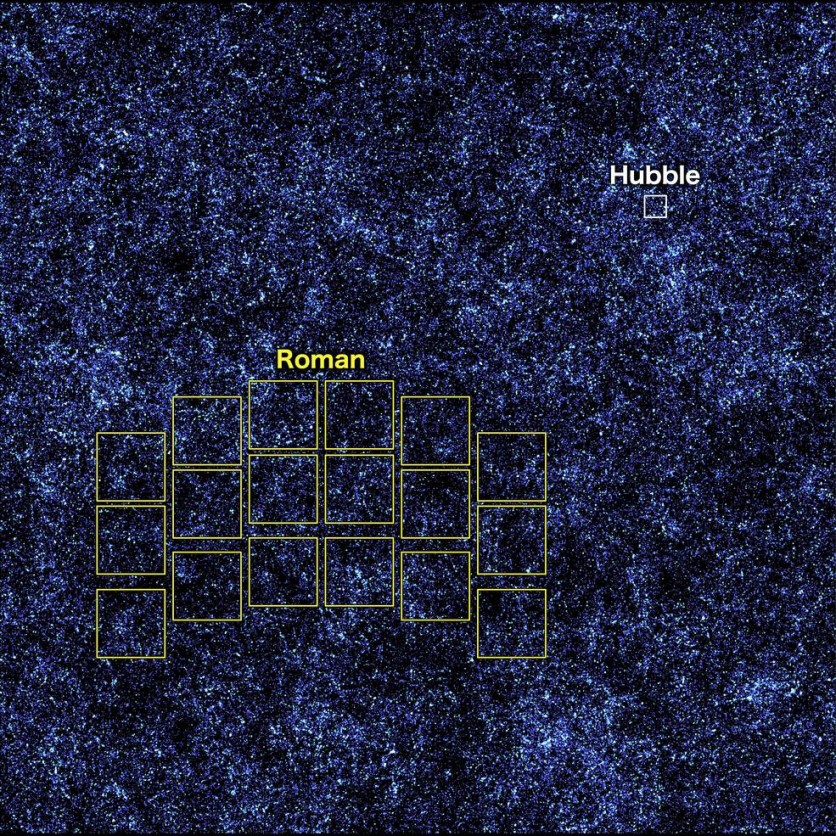NASA's upcoming Nancy Grace Roman Space Telescope will roll back time and reveal the universe's evolution in ways that have never been possible before, according to a new simulation.
Roman is set to unravel how the cosmos changed from a primordial sea of charged particles to the complex web of gigantic cosmic structures we observe today.

Solve Cosmic Mysteries
"The Hubble and James Webb Space Telescopes are optimized for studying astronomical objects in-depth and up close, so they're like looking at the universe through pinholes," Aaron Yung, a postdoctoral fellow at NASA's Goddard Space Flight Center, who led the simulation, said in a statement.
"To solve cosmic mysteries on the biggest scales, we need a space telescope that can provide a far larger view. That's exactly what Roman is designed to do."
Roman's broad perspective will be enhanced by Hubble's wider wavelength coverage and Webb's more in-depth observations to provide a more complete picture of the cosmos.
A two-square-degree area of the sky, or around 10 times the apparent size of a full moon, is covered by the simulation, which contains more than 5 million galaxies.
It is based on a tried-and-tested galaxy formation model that summarizes our existing knowledge of the universe. The researchers can replicate tens of millions of galaxies in less than a day with incredibly advanced technology, according to NASA.
Scientists may compare real data from Roman to a variety of such simulations when it launches, putting their models to the ultimate test. This will make it easier to understand the mechanics of galaxy creation, dark matter, and other cosmic mysteries.
Read Also : NASA's James Webb and Hubble Will Keep An Eye on DART Mission's Asteroid Impact With Dimorphos
Thousand Times Faster than Hubble
Roman will have the rare capacity to cover many times more sky than large surveys like the CANDELS survey while matching the depth of the Hubble Ultra Deep Field, according to Yung.
Astronomers may be able to assess how accurate Hubble and Webb's images of the early cosmos are with the comprehensive view that Roman will provide.
NASA claims that Roman will be able to map the universe up to a thousand times faster than Hubble with its extensive cosmic surveys. The observatory's robust construction, quick slewing speed, and broad field of view will make this possible.
Roman will move quickly between each cosmological destination. Vibrations will immediately subside once a new target is captured since potentially shaky structures like the solar arrays are secured in place.
According to Jeffrey Kruk, a research astronomer at Goddard, the upcoming telescope will take about 100,000 images annually.
Roman is currently in development and is scheduled for May 2027 launch.

ⓒ 2025 TECHTIMES.com All rights reserved. Do not reproduce without permission.




